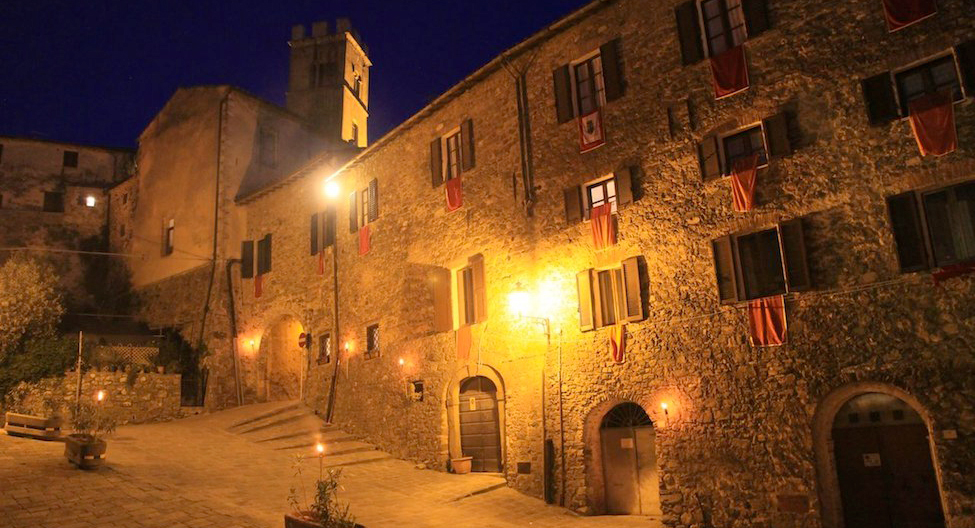
Pitigliano seems to have stepped from a fairtale. It appears to have grown from the stone of this wildly beautiful promontory, bounded by green valleys crossed by the Lente and Meleta rivers. The high walls of volcanic tufa, carved by a thousand caverns, project tower-houses, heightening the picturesqueness of the typically medieval town. The houses, constructed on a tuffaceous drum, repeat the vertical of the sheer cliff, making the enclosing walls almost superfluous, although the defensive structures such as the 14th century Orsini Palace are most imposing. The town treasures the evidence of its ancient past, the centuries of succeeding civilizations and their cultures: the Rinaldian eneolithic period; the Etruscan tombs discovered in the surrounding territory or along the city walls; the Roman origin of the antique Gens Petilia; the Medieval Aldobandeschi family that ruled the Maremma for almost half a millennium; the noble Orsini family in the Rennaisance, followed briefly by the Sienese, then the Medici and their heirs the Lorraine who initiated a notable urban development and stimulated an important phase of modernazation. This past becomes present while walking the old streets and admiring the ancient houses and visiting the famous Jewish ghetto. The large and active Jewish community, dating from the 15th century, has prompted the name “Little Jerusalem” for this splendid village. After important works of restoration, the Sinagogue is again open for worship, and it, as well as the Hebrew cemetery, the kosher oven where unleavened bread was baked, the cellar carved in the rock where kosher wine was produced, the kosher butchershop, the bath for the purification of the women and the cleaners are open to the public. The richness of the past has been handed down in wine production as well. The vineyards, fertilized by volcanic tufa and a millennim old humus, produce one of the most highly regarded Italian white wines, known for its excellence and one of the first wines to receive the recognition of DOC. Several of the grottos and Etruscan tombs carved in the rock are used as cellars for ageing and preserving the wines. The same respect for traditions holds true for the production of the extraordinary, cold-pressed olive oil which when combined with the wine, make the typical dishes of Pitigliano even more delicious. In addition to the various food-and-wine events, the “Torciata di San Giuseppe” is held every year on the 19th of March. In the evening, a group of men dressed in habits, carry bundles of lighted reeds on their shoulders from via Cava to the town square. There the reeds and a puppet representing the “Harsh Winter” are burned, creating a spell-binding effect. The “Petilia Festival” takes place every year during the last week of August. It is the perfect mixture of music, wine and food with the charm of the village as its setting. The interesting “International Documentary Film Festival” is organized during the first week of December. (agriturismoverde.com)






